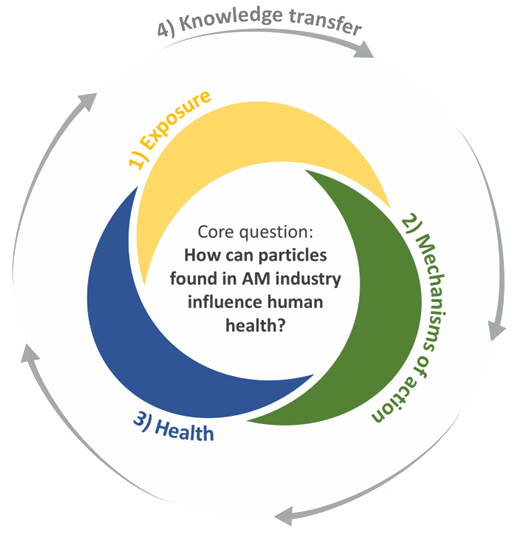NanoSafety2 structure
The project consists of four interconnected sub-projects (SPs), as depicted in Figure 1.
SP1: Exposure conducts AM (nano)particle measurement, collection, characterization, and exposure assessment.
SP2: Mechanisms of Action investigates particle toxicological effects by exploring biological mechanisms in vitro and in silico, in order to provide state-of-the-art hazard assessment and prediction of AM (nano)particles' biological effects.
SP3: Health assesses the long-term health risks in cohorts of AM (nano)particle-exposed workers.
SP4: Knowledge Transfer undertakes bilateral knowledge transfer between academia and the AM industry, and an ambitious dissemination of research findings.
This proactive approach is crucial because as AM technology evolves, introducing new solutions and materials, the potential effects on human health remain largely unknown. By addressing these concerns head-on, the aim is to ensure a safer and healthier working environment for everyone involved in the AM industry or simply having a desktop 3D printer at home. NanoSafety2 will be an important contribution to the development of the Örebro University’s strategic profile Pollutants and Society, and the NanoSafety concept is of vital importance for the theme Chemicals, Environment and Health at the Platform for a Sustainable Future at Örebro University PSF@ORU.

Figure 1: The NanoSafety2 project overview. The core question is answered by integration of four sub-projects (Exposure, Mechanisms of action, Health, and Knowledge transfer). The data generated in sub-projects converge into the core question by assessing interrelated, yet specific, aspects of (nano)particle toxicity.
